Why is Marcus Whitman’s statue being removed from the U.S. Capitol? In Murder at the Mission, Blaine Harden explains the Whitman Massacre and upends one of the Columbia River Basin’s most enduring legends
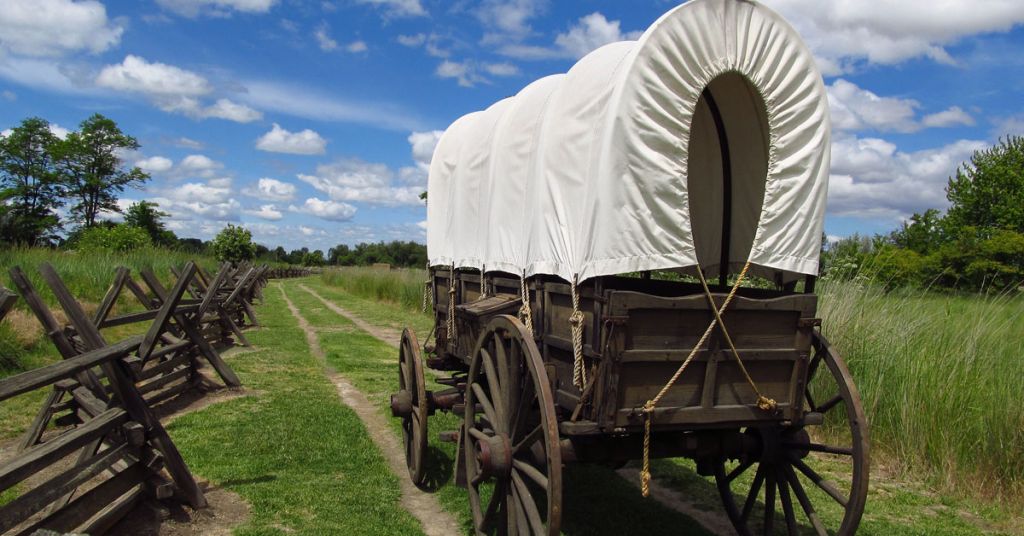
Pioneer daze: A new book says migration on the Oregon Trail was predicated in large part on intentional falsehoods. Photo by Jasperdo/Creative Commons
By Chuck Thompson. July 15, 2021. In 1847, the missionary Dr. Marcus Whitman, his wife, and 11 others were killed by members of the Cayuse tribe near present-day Walla Walla, Washington. What became known as the Whitman Massacre was a turning point in the history of the Pacific Northwest.
Printed accounts of the event turned into a rallying cry against local indigenous populations and prompted Congress to turn the Oregon Country into an official U.S. territory. An inexorable stampede of settlers quickly followed.
Located just west of Walla Walla, the Whitman Mission National Historic Site memorializes the event and its significance. Just one problem.
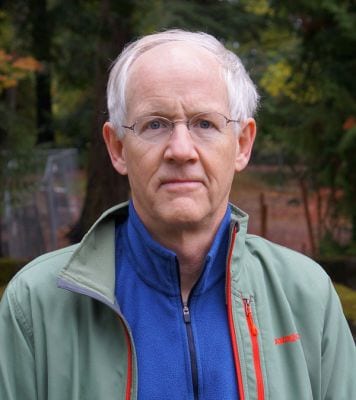
Regional champion: Blaine Harden. Courtesy Viking Random House
“The story is completely a pack of lies,” Washington native and author Blaine Harden tells Columbia Insight. Harden’s impressively researched and eminently readable new book, Murder at the Mission: A Frontier Killing, Its Legacy of Lies, and the Taking of the American West, exposes the falsehoods that led to the veneration of a little known missionary and more than a century of persecution of the Cayuse.
“The story became the official history of the United States. It was published in virtually every history book read by every student in every high school in the United States,” says Harden, who also wrote A River Lost: The Life and Death of the Columbia.
While focusing on the tale that grew around the killings (which did in fact take place) Harden’s book explains how the fallout from deliberate prevarication surrounding its mythology propelled bogus claims on treaty-protected Native rights. These include theft of senior water rights, deleterious effects on the Umatilla River and illegal acquisition of tribal lands by white settlers that led to the economically disadvantageous “checkerboard” pattern of land ownership on reservations that prevails to this day.
It’s not all grim news.
“What’s interesting about the Cayuse is they had 120 years of torment but in the past 30 years they’ve done really well,” says Harden. “They’ve educated members of the tribes from the Umatilla Reservation. Good lawyers. Good land-use planning. Good biologists. Good management of money. They have better housing, better water, better schools, better medical care, longer lives, less smoking, less obesity. They really have done a remarkable job reinventing themselves.”
In 1953 a heroic statue of Whitman was placed in National Statuary Hall in Washington, D.C., as one of two representing Washington state. In light of emerging facts that contribute to an unflattering rewrite of the Whitman story, in April of this year the Washington Legislature voted to remove his statue from the Capitol and replace it with a statue of late tribal rights activist Billy Frank Jr. The statue swap is expected to be completed later this year.
Murder at the Mission is available for purchase from Penguin Random House.
Following is an abridged version of the introductory chapter of Murder at the Mission, by Blaine Harden.
Introduction: The Good Doctor
My descent into the looking-glass legend of Dr. Marcus Whitman began in elementary school when I performed in a class play about the good doctor. It was the early 1960s and I lived in the tumbleweed outback of the Pacific Northwest, where Whitman had been killed by members of the Cayuse tribe in 1847 and where he lived on as a much-in-demand martyred ghost.
Besides school plays, he had appeared in an opera, poems, hymns, children’s books, radio plays, movies, and the stained-glass windows of churches from Spokane to Seattle. His name was on high schools, middle schools, highways, hospitals, banks, churches, nursing homes, a national forest, a county in Washington State, and a glacier on Mount Rainier.
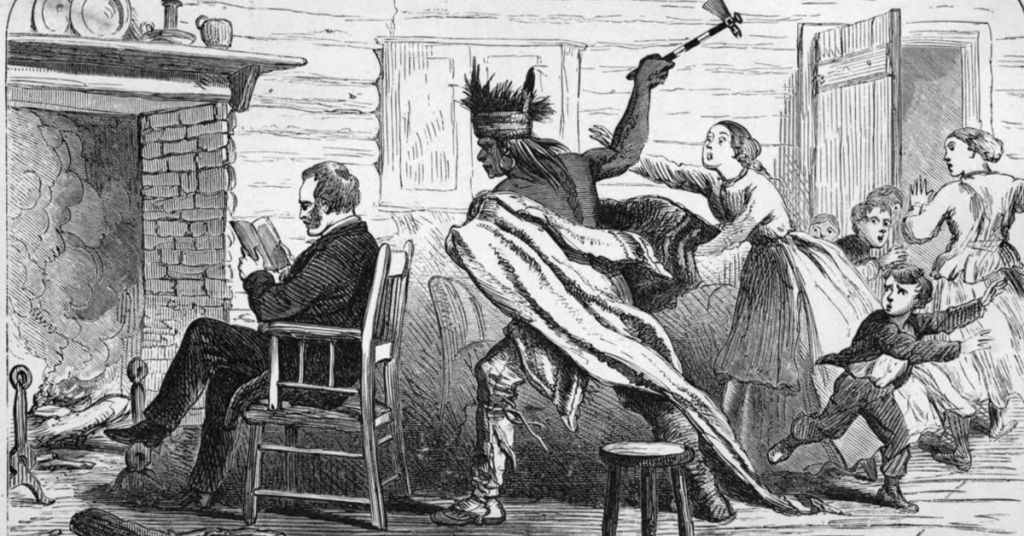
Manifestly false: Marcus Whitman wasn’t the unwitting victim depictions of his murder, like this one from an 1881 book, made him out to be. Wikimedia Commons
Near the Walla Walla River, where his mutilated body had been buried in a mass grave, the National Park Service presided over the Whitman Mission National Historic Site. The tallest building in nearby Walla Walla was a 12-story luxury hotel called the Marcus Whitman. It looked down upon the campus of Whitman College, an excellent liberal arts college. Boosters in Washington State raised money in 1953 to send a bronze statue of Whitman—clad in buckskin, carrying a Bible, and bearing a slogan that read “My plans require time and distance”—to Washington, D.C., for display in the Capitol’s National Statuary Hall.
The statue received a welcoming speech from Supreme Court Justice William O. Douglas, the most prominent graduate of Whitman College—with the possible exception of Adam West, the actor who played Batman on television in the sixties. Douglas condemned the “treachery” of the Indians who killed Whitman and said that the doctor’s example should “fill the hearts of our people with pride and teach them that courage and devotion can overcome even the impossible.”
**
Whitman and his wife, Narcissa, were Presbyterian missionaries from upstate New York. They traveled west—into what Narcissa called “the thick darkness of heathenism”—during a peak season of godliness in the United States. Called the Second Great Awakening, it transformed millions of unchurched Americans into ardent, evangelical, conversion-focused Protestants. Before the revival took off, around 1800, just one in 10 Americans attended church; by 1836, when the Whitmans headed west, nearly eight in 10 did.
As Protestant evangelism surged, it locked arms with nationalism. The result was Manifest Destiny, an imperialist theology of God-ordained exceptionalism and continental expansion that seized the popular imagination just as the federal government was figuring out how to exploit one and a quarter million square miles of newly acquired land that stretched from Texas to California and up to what is now the Canadian border. Manifest Destiny justified almost anything Americans wanted to do in this vast new landscape. It was God’s will, after all, for these chosen people “to overspread and to possess.”
The Whitmans were at the missionary vanguard of the land grab. Their quest, as they described it, was to convert the “benighted Indians” to Christianity and civilize them so that they might survive a looming stampede of westbound white people.
The Whitmans focused their salvific attentions on the Cayuses, a small tribe of expert horsemen and aggressive traders on the Columbia Plateau. When the missionaries arrived in Cayuse country—straddling what would become the state line of southeastern Washington State and northeastern Oregon—tribal elders were intrigued. They hoped that a few white people and their white God might be helpful, augmenting the spiritual power of their own religion. For 11 years, albeit with mounting disappointment and bitterness, the Indians allowed the Whitmans to preach, teach, farm, and build on their land.
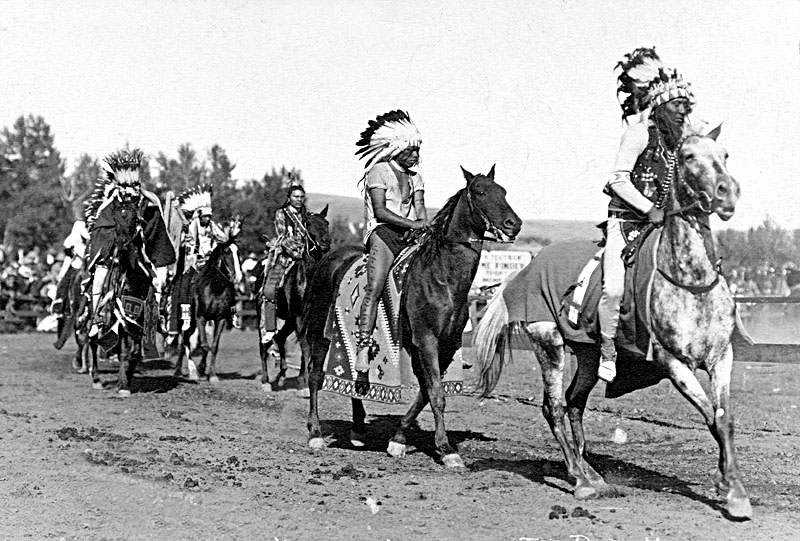
Expert horsemen: Cayuse warriors and their horses, photographed here in 1910, were renowned across the West for their martial skill, tactics and courage. Photo by Walter S. Bowman/Wikimedia Commons
On November 29, 1847, a handful of Cayuses ended the experiment. They killed the Whitmans, tomahawking, shooting, knifing, whipping, and stomping them into the mud outside their mission house. Their fury was such that they used one of Dr. Whitman’s surgical saws to cleave open his skull and the skull of his wife. Eleven other white men were also killed. Remains of all the victims were buried in shallow graves, where scavenging animals got to them.
As word of the atrocity spread east, it became a tipping point in the history of the West. Within a year, Congress made the Oregon Country—which had been shared for decades with Great Britain under a treaty of joint occupation—an official territory of the United States. The killings also horrified East Coast Protestants, whose Sunday offerings financed missionaries. The mass murder became infamous as the Whitman Massacre.
**
My grade school’s play about Marcus Whitman did not reenact his violent death, which adults viewed as too grisly for grade schoolers. (The massacre, though, was often acted out in high school and college productions.) The stage productions celebrated Whitman as a patriot, a Christian role model, and a frontier hero who, like Lewis and Clark, possessed undaunted courage. He was depicted preaching on Sundays, curing illnesses, teaching the Cayuses to read, and showing them how to grow wheat, grind flour, and make bread.
Thrillingly, as many of the productions depicted it, Whitman also stopped a British attempt to steal the Pacific Northwest away from the American people. Five years before his murder, Whitman grabbed a Bible, jumped on a horse, and rode alone through terrible winter snows across the continent to Washington, D.C. There, he warned President John Tyler of British scheming and begged him to build a road for wagons rolling west. The dialogue went like this:
TYLER:
You have some farsighted ideas, Dr. Whitman.
WHITMAN (ENTHUSIASTICALLY):
What I want to see is the American flag wave from ocean to ocean. Put that road through, build the supply depots and the settlers will come in such vast numbers that we’ll forever route the British lion from Oregon Territory! We’ll win that country for the United States!

Clouded memory: The Whitman Mission National Historic Site is located along the Oregon Trail near Walla Walla. Photo by Jasperdo/Creative Commons
After securing presidential support, Whitman raced back west. He stopped off in St. Louis, Missouri, from where, in 1843, he led what was then the largest-ever wagon train bound for Oregon.
In the years that followed, thousands upon thousands of American settlers rolled west over the Oregon Trail. An unstoppable force, they elbowed the British into Canada, forced Indians off their land, and opened up the Oregon Country for white Protestants, who would eventually include my mom and dad, my two sisters, my brother, and me.
Whitman’s story was a real-life Old West passion play—or so it seemed. Violent death at the hands of tomahawk-slinging hostiles gave the story a stirring shiver of last-stand martyrdom. It linked Whitman to General George Armstrong Custer at Little Bighorn, to Davy Crockett at the Alamo, even to Christ at Calvary.
What no one told me at the time was that the Whitman story was largely a pack of lies.
[perfectpullquote align=”full” bordertop=”false” cite=”” link=”” color=”” class=”” size=””]”The West was mythologized—that is, lied about—at the same time it was being settled.”[/perfectpullquote]
Protestant clergymen had cooked up most of it decades after the Whitmans were murdered. Its principal author was the Reverend Henry Harmon Spalding, a New York–born Presbyterian missionary who himself just barely managed not to be killed by the Cayuses.
Spalding was fiery-eyed, scraggly-bearded, and endlessly aggrieved. He had a poisonously strange relationship with Marcus and Narcissa Whitman. When they were alive, he tormented them. When they were dead, he—with the help of his ordained collaborators—made up the great patriotic whopper that transformed them into legends.
Prone to self-pity and despondency, Spalding was an inventive self-promoter who churned out blood-chilling pulp fiction, which he persuaded newspaper editors to print as eyewitness frontier history from a truth-telling man of God.
He was president of the Oregon chapter of a secret nativist society that demonized Catholics and immigrants. He was most productive—and far less irritable—while living among Indians.
His fellow missionaries wrote countless letters about his erratic, spiteful, and annoying behavior. One said Spalding “seems unable to control himself and . . . has a disease in the head which may result in derangement.” Yet a peevish personality and periodic bouts of irrationality did not stop him from collaborating for decades with ministers, writers, and politicians from all across the United States in creating and popularizing the Whitman lie.

Legal grounds: Laws and treaties provided no protection against settlers’ demands for choice tribal lands around what’s now the Wallowa Whitman National Forest. Photo USFS
Nor did a life of lying wreck his posthumous reputation. In 1936, a century after Spalding arrived in Oregon, President Franklin D. Roosevelt recognized his achievements as a missionary and pioneer. A small unincorporated community is now named after him in northern Idaho, where the U.S. National Park Service honors his memory and where his grave dominates Spalding Cemetery, a tribally owned burial ground that serves the Nez Perce people.
Spalding’s big break—credibility-wise—came 24 years after the Whitman killings. On a visit to Washington, he persuaded the U.S. Senate to print his version of Whitman’s heroics in an official pamphlet. It quickly spread—as authentic, government-approved western history—to the pages of the Encyclopaedia Britannica, The New York Times, The Ladies’ Home Journal, and most of the American history textbooks in public and private schools across the country.
On a Sunday morning in Chicago half a century after Whitman’s death, more than 40 Protestant ministers sermonized simultaneously about his “heroic patriotic Christian work.” The story was taught in Sunday schools and published in bestselling books. The Detroit News described Whitman’s journey on horseback to Washington as “the most famous ride in American history!” While it was less well known than Paul Revere’s ride, many columnists and editorial writers claimed it was more patriotically magnificent.
**
Not long after my grade school performed the Whitman play, the history of the American West was given a thorough rewrite. Revisionist scholars—many of them young, non-male, non-white, non-Protestant—shredded the triumphalist view that the frontier had been “tamed.” Settlement of the West, they wrote in the 1970s and ’80s, had not been an edifying exercise in Jeffersonian democracy or an uplifting application of Christian values. Rather, it was “conquest”—a forced taking of territory that was often brutal, greed-driven, racist, ecologically disastrous, even genocidal.

He’s history: Marcus Whitman’s likeness will be removed from National Statuary Hall later this year. Photo Architect of the Capitol
American Indians were the frontline victims, losing their lands, their cultures, their languages, and often their lives. They were decimated by diseases, defeated in wars, deported from their homelands, and corralled on reservations, and several generations of Indian children were taken away to government-run schools, which tried to turn them into little white boys and girls, sometimes with devastating results. Over time, Indian Country became the poorest part of the West. The Cayuse tribe—branded for generations as the irredeemable demons who murdered the Whitmans—was nearly exterminated.
The legacy of conquest, as revisionist historian Patricia Limerick has written, is as fundamental to understanding the West as the legacy of slavery is to understanding the South. Both “have tested the ideals of the United States,” and both demand “sober national reflection.”
Yet Americans did not see it that way. “The legacy of slavery was serious business, while the legacy of conquest was not,” Limerick wrote. She said the unsightly and undemocratic realities of the West had “dissolved into stereotypes of noble savages and noble pioneers struggling quaintly in the wilderness.”
[perfectpullquote align=”full” bordertop=”false” cite=”” link=”” color=”” class=”” size=””]”The Whitman lie is a timeless reminder that in America a good story has an insidious way of trumping a true one.”[/perfectpullquote]
To correct these perceptions, Limerick and legions of other revisionist historians took an ax to the story of how the West was won. Their efforts were influential in academia and popular culture, stripping feel-good nonsense out of books, paintings, movies, and television shows. Consider Clint Eastwood’s 1992 film Unforgiven. It cut false sentiment from every aspect of life in the 19th-century West, especially the supposed romance of gunfighting. Eastwood played a destitute pig farmer and washed-up gunfighter who was no longer a sure shot. He went to work for vengeful “whores” who wanted their abusers dead. At close range, so he did not miss, he coldly murdered for money.
In the same somber spirit, filmmakers Ken Burns and Stephen Ives rounded up a sizable herd of revisionist historians in the mid-1990s. Using eight episodes of prime-time public television, they told an unvarnished and uncomfortable story of the West. Compared with what had been on television in the four previous decades (Bonanza, Gunsmoke, Little House on the Prairie), the series was “more frank about our failures and more clear-eyed about the cost of even our greatest successes.”
One episode focused on Marcus and Narcissa Whitman, explaining that cultural misunderstandings caused their deaths. The documentary, though, did not bother to debunk the story of Whitman riding a horse to the White House to save Oregon. Echoing the no-more-hokum consensus that typified the work of revisionist historians, the filmmakers simply omitted the Whitman lie—never mind that millions of Americans learned about it in Sunday school, in the pages of their schoolbooks, and in The New York Times—and believed it for decades.
**
Leaving out lies does not get at the truth, especially in the West, where lies have been essential tools for getting rich, going broke, and glorifying the grim business of conquest. Had railroads and banks and newspapers not lied to sodbusters, far fewer of them would have rushed to the arid West to suffer, fail, and plow up land unsuited for row crops.
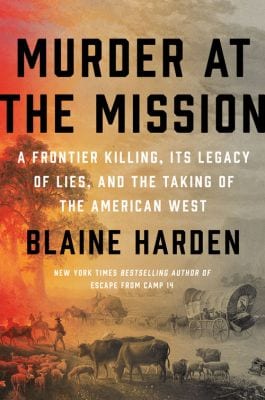
The West was mythologized—that is, lied about—at the same time it was being settled. Indian chiefs and Indian fighters ranged back and forth between flesh and fantasy, between the real West and its dime-novel doppelgänger. Sitting Bull, leader of the Sioux, used the break between the Battle of Little Bighorn, in 1876, and the Massacre at Wounded Knee, in 1890, to tour Europe and the United States while performing for pay in Buffalo Bill’s Wild West Show. Kit Carson, an actual Indian fighter, failed in 1848 to save a white woman from Apaches. But near her arrow-riddled corpse he discovered a dime novel about the fictional Kit Carson, who never failed to save a good white woman from Indian peril. Having stumbled upon his better, more marketable mythical self, the real Kit Carson decided to cash in on it, writing (or rather dictating, since he couldn’t read) an autobiography.
The “Whitman Saved Oregon” story was a similarly surreal western confabulation. Two decades after running for his life from the Cayuses who killed the Whitmans, the middle-aged Henry Spalding massaged his fading frontier memories, spiced them with hysterical resentments, and colluded with other Protestant ministers to fabricate an utterly original American icon. Pious, fearless, and handy with a horse, he was Marcus Whitman, the martyred missionary doctor who galloped across America, sweet-talked the president of the United States, and added three stars to the red, white, and blue.
Warren G. Harding, a forgettable American president but a wily American demagogue, explained it best. After delivering a speech in 1923 that celebrated the Whitman lie in all its horse-riding, flag-waving, God-fearing glory, Harding observed, “If it isn’t true, it ought to be.”
This book tracks the long and unlikely arc of a great American lie. An unemployed and embittered Presbyterian minister created it as catnip for churchy countrymen who like their politics—and their history—to be simple, action-packed, hero-driven, patriotic, self- congratulatory, and ordained by Almighty God. Spalding’s fraud helped him get a job. It sanctified and encouraged conquest of the West. It transformed a mediocre missionary doctor into a martyred American hero. And it all but exterminated an Indian tribe.
Spalding’s story was so “thrilling”—an adjective invariably used in handbills promoting church lectures about Whitman’s ride—that even after it was shown to be a deliberate falsehood and self-contradicting nonsense, many white Americans, particularly in the Pacific Northwest, refused to let it go. They couldn’t help but retell the story—in Sunday sermons, outdoor summer spectacles, and public-school plays.
The Whitman lie is a timeless reminder that in America a good story has an insidious way of trumping a true one, especially if that story confirms our virtue, congratulates our pluck, and enshrines our status as God’s chosen people.
From MURDER AT THE MISSION by Blaine Harden, published by Viking, an imprint of Penguin Publishing Group, a division of Penguin Random House, LLC. Copyright © 2021 by Blaine Harden.
READ MORE INDIGENOUS ISSUES STORIES.

The Collins Foundation is a supporter of Columbia Insight’s Indigenous Issues series.






And by many accounts, prior to their last visit to the Whitman sanctuary, the Cayuse (and others) were fed up with the white promise of heaven while the white fact of disease had already decimated the very congregation, intended for salvation.
excellent work Mr Thompson.
Can’t wait to read the book! Thanks, Mr Thompson!
Okay Whitman was glorified falsely. But still plenty of evidence to his brutal massacre. I guess murder is okay if you’re preaching to natives. It seems these Cayuse were murderers and cowards. It doesn’t take courage to murder women and children.
Whitman’s treachery led to the belief that “the only good Indian is a dead Indian” and the direct line to the genocidal Indian schools whose stated mission was “kill the Indian, save the man”
They only way to stop the unrepentant Whitmans was to kill them. Too little, too late.
-Old White guy, Dave Stone, Oregon.
What is left out in this article is that Whitman and his band of missionaries brought smallpox and measles to the Cayuse which decimated them. The massacre was retaliatory.
If you tour the historical landmark it explains this objectively.
This would have happened even if the Whitmans had never arrived. Nature abhores a vacumm. Even the mystication of the events and the advent of obsequious historians.